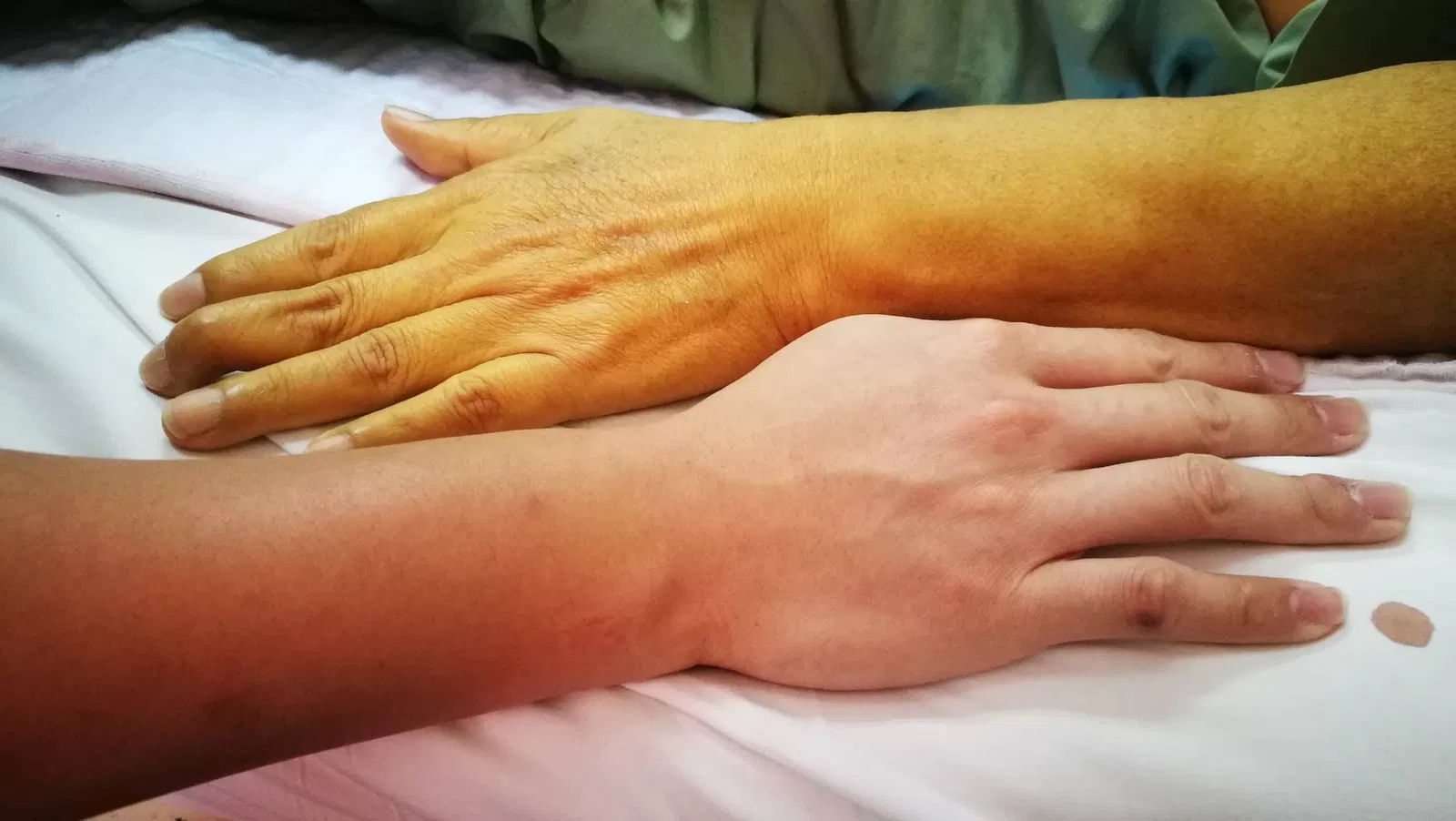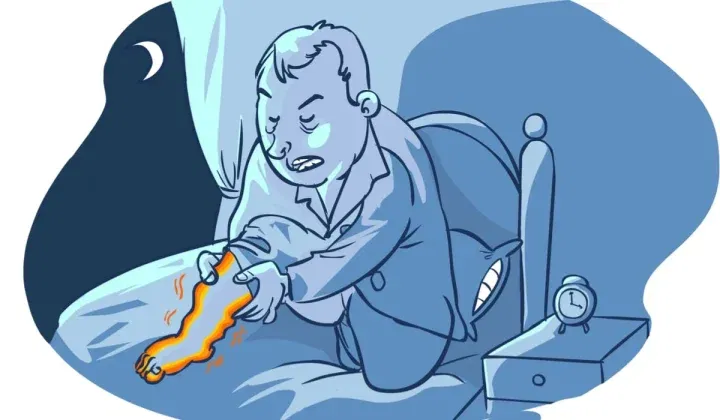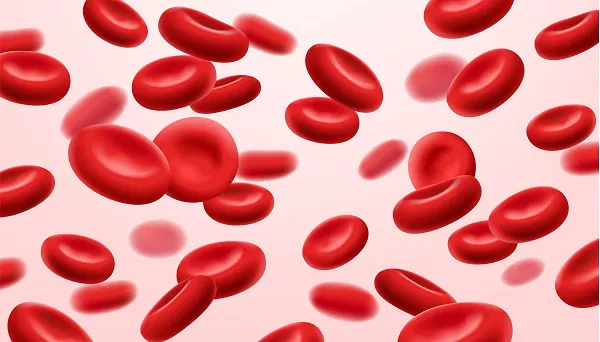12 Silent Symptoms of ANEMIA You Shouldn’t Ignore

Anemia is a condition in which your body doesn’t have enough healthy red blood cells to carry adequate oxygen to your tissues. While some symptoms of anemia are obvious, others can be quite subtle, often mistaken for stress, poor sleep, or a busy lifestyle. If left untreated, anemia can lead to serious health complications. Here are 12 silent symptoms of anemia you should never ignore:
Constant Fatigue
One of the earliest and most common symptoms of anemia is persistent fatigue. You may feel tired even after a full night’s rest or exhausted after doing tasks that never used to wear you out. This happens because your body isn’t getting enough oxygen due to a lack of red blood cells.
Pale or Yellowish Skin

Your skin may lose its healthy color and appear unusually pale or slightly yellow. This is especially noticeable in the face, inner eyelids, and fingernails. Pale skin indicates a lower red blood cell count, a hallmark of anemia.
Shortness of Breath
If you feel winded after climbing a short flight of stairs or walking a moderate distance, it may be due to anemia. The body tries to compensate for the lack of oxygen by increasing your breathing rate, causing breathlessness even with mild exertion.
Dizziness or Lightheadedness
Frequent dizziness, especially when standing up quickly, can be a sign of anemia. When your brain doesn’t receive enough oxygen, it can result in feelings of lightheadedness or even fainting in severe cases.
Cold Hands and Feet
Poor circulation caused by anemia can lead to cold extremities. The body prioritizes sending oxygen-rich blood to vital organs, which reduces blood flow to your hands and feet.
Frequent Headaches

Recurring headaches or migraines might be linked to a reduced oxygen supply to the brain. The brain’s blood vessels may dilate in response, leading to discomfort and pressure.
Heart Palpitations
Your heart may beat faster or irregularly in an attempt to deliver more oxygen throughout your body. These palpitations can be alarming and are a warning sign that your heart is working overtime.
Chest Pain
In more serious cases, anemia can cause chest pain, particularly in people with preexisting heart conditions. The heart may not receive enough oxygen, which could trigger angina (chest pain) or other cardiovascular issues.
Brittle Nails or Hair Loss
Your nails may become weak, brittle, or spoon-shaped, and you may notice excessive hair shedding. These are signs that your body is diverting nutrients away from non-essential functions like hair and nail growth.
Strange Cravings (Pica)
Craving non-food items such as ice, clay, dirt, or starch is known as pica, and it is particularly associated with iron deficiency anemia. If you experience these cravings, it’s important to speak with a healthcare provider.
Restless Legs Syndrome (RLS)

Many people with anemia, especially iron deficiency, experience restless legs syndrome. This condition causes an irresistible urge to move your legs, often accompanied by tingling or crawling sensations, especially at night.
Poor Appetite
A lack of interest in food, particularly in young children, can be a subtle indicator of anemia. Left unchecked, poor appetite can contribute to nutritional deficiencies and slow growth.
When to See a Doctor
If you recognize any of these symptoms, especially in combination, you should see a healthcare professional. Anemia can result from a range of causes including iron or vitamin deficiencies, chronic diseases, or bone marrow disorders. A simple blood test can determine your red blood cell count and iron levels.
Treatment and Prevention

Treatment depends on the type and cause of anemia. Iron deficiency is the most common form and can often be treated with iron-rich foods and supplements. In other cases, you may need vitamin B12 or folate supplements, medication to address underlying diseases, or more specialized interventions like blood transfusions.
Eating a balanced diet with iron-rich foods such as red meat, leafy greens, beans, and fortified cereals can help prevent anemia. Additionally, vitamin C enhances iron absorption, so including citrus fruits or tomatoes in your meals can be beneficial.
Conclusion
Anemia can develop slowly and silently. While it’s easy to dismiss symptoms like fatigue or pale skin, they may be your body’s way of signaling an oxygen shortage. Recognizing the silent signs of anemia and seeking timely treatment can improve your quality of life and prevent more serious complications. Don’t ignore what your body is trying to tell you—an early diagnosis can make all the difference.
The Importance of Prevention and Early Diagnosis
Anemia, though often underestimated, can have a profound impact on quality of life, mental well-being, and overall health. For this reason, prevention and early diagnosis are of critical importance. Proper awareness of the symptoms and the risks associated with anemia can help millions of people avoid complications, chronic fatigue, and issues that interfere with daily activities. Regular blood tests, a balanced diet, and the ability to recognize early signs can make the difference between a manageable condition and a long-term health challenge.
Moreover, dietary prevention plays a vital role. Foods rich in iron (such as red meat, legumes, spinach, and fortified cereals), combined with foods high in vitamin C that help boost iron absorption, significantly contribute to maintaining healthy hemoglobin levels. It is also advisable to avoid excessive consumption of coffee or tea during meals, as they may inhibit iron absorption — a simple but important step.
It’s also important to acknowledge that anemia isn’t always caused by poor diet. Some forms of anemia are related to autoimmune disorders, chronic illnesses, or genetic conditions. In such cases, collaboration with a medical specialist and continuous monitoring are essential. A physician can determine the exact cause through proper testing and recommend the most appropriate treatment plan.
Finally, raising awareness about anemia, especially in vulnerable populations such as women of reproductive age, pregnant individuals, children, and the elderly, is crucial. Public health campaigns, school-based health programs, and easier access to diagnostic screenings can save lives and prevent serious complications. Taking care of our health begins with prevention, and anemia is a clear example of how knowledge truly is power.
